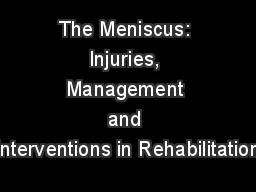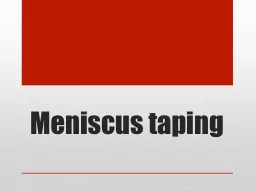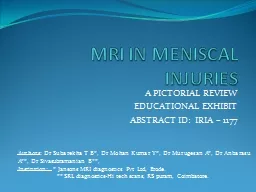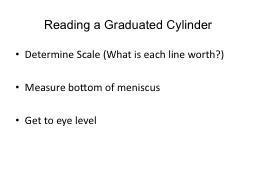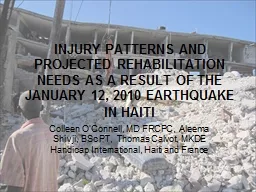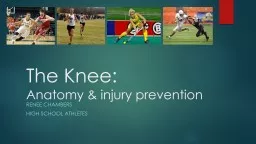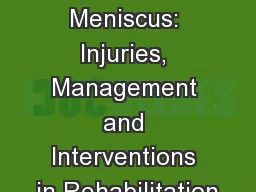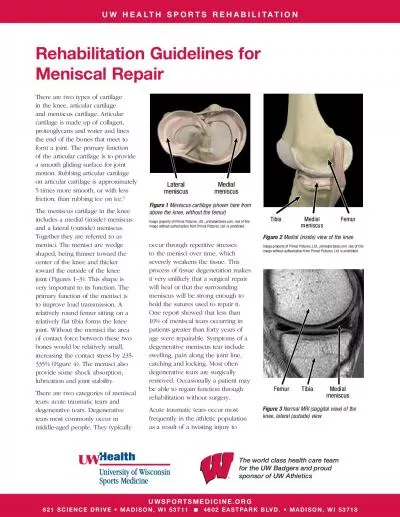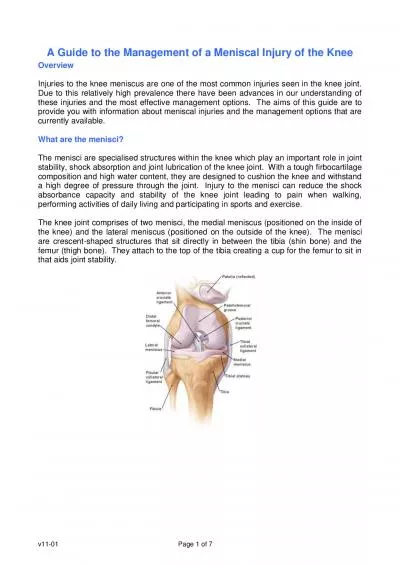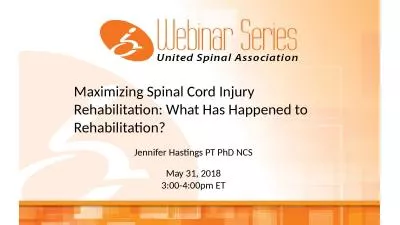PPT-The Meniscus: Injuries, Management and Interventions in Rehabilitation
Author : natalia-silvester | Published Date : 2019-10-31
The Meniscus Injuries Management and Interventions in Rehabilitation Zac Snow PT DPT Director of Rehabilitation Advanced Orthopaedic Specialists powered by Incite
Presentation Embed Code
Download Presentation
Download Presentation The PPT/PDF document "The Meniscus: Injuries, Management and I..." is the property of its rightful owner. Permission is granted to download and print the materials on this website for personal, non-commercial use only, and to display it on your personal computer provided you do not modify the materials and that you retain all copyright notices contained in the materials. By downloading content from our website, you accept the terms of this agreement.
The Meniscus: Injuries, Management and Interventions in Rehabilitation: Transcript
Download Rules Of Document
"The Meniscus: Injuries, Management and Interventions in Rehabilitation"The content belongs to its owner. You may download and print it for personal use, without modification, and keep all copyright notices. By downloading, you agree to these terms.
Related Documents

